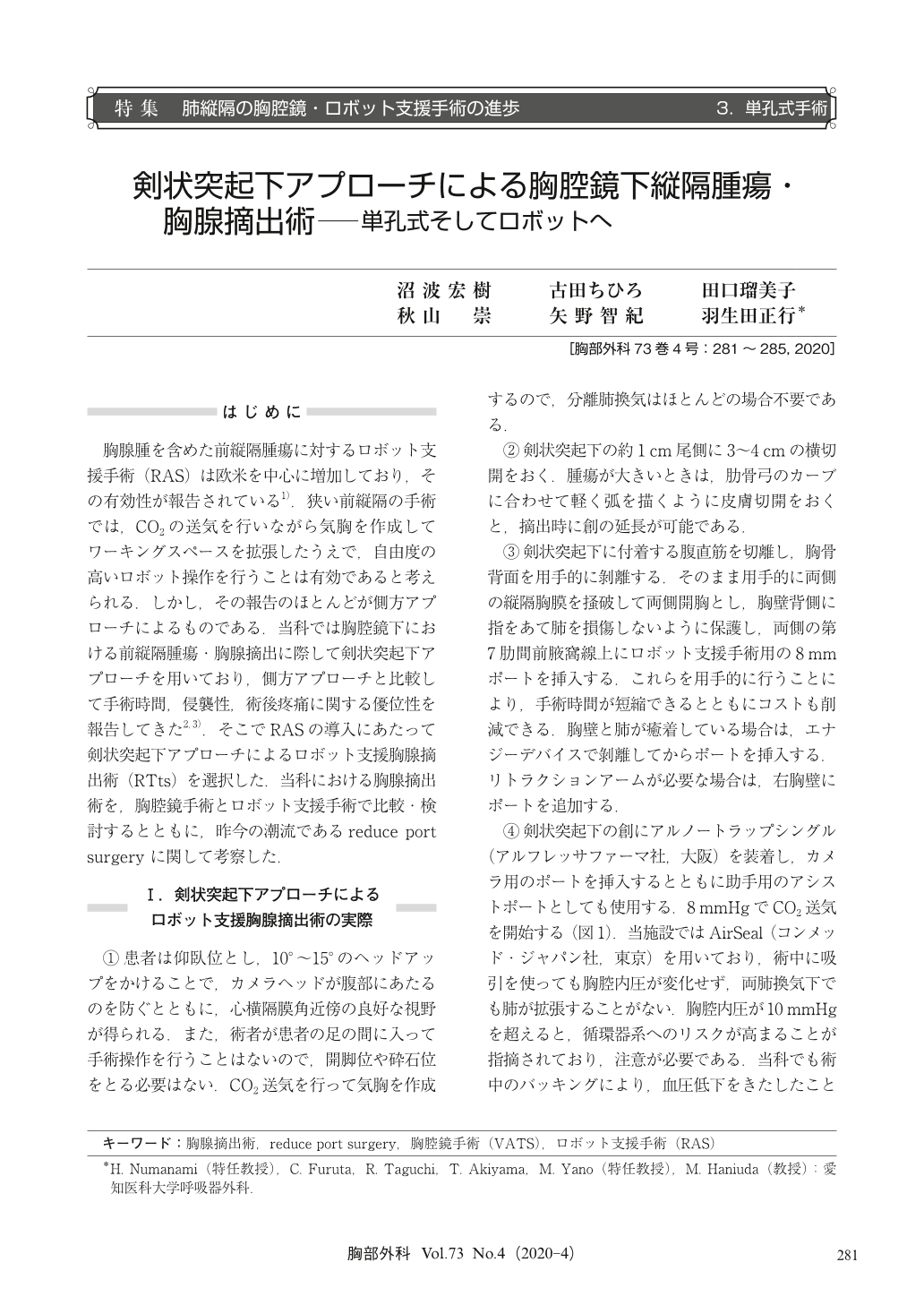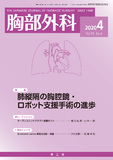Japanese
English
- 有料閲覧
- Abstract 文献概要
- 1ページ目 Look Inside
- 参考文献 Reference
胸腺腫を含めた前縦隔腫瘍に対するロボット支援手術(RAS)は欧米を中心に増加しており,その有効性が報告されている1).狭い前縦隔の手術では,CO2の送気を行いながら気胸を作成してワーキングスペースを拡張したうえで,自由度の高いロボット操作を行うことは有効であると考えられる.しかし,その報告のほとんどが側方アプローチによるものである.当科では胸腔鏡下における前縦隔腫瘍・胸腺摘出に際して剣状突起下アプローチを用いており,側方アプローチと比較して手術時間,侵襲性,術後疼痛に関する優位性を報告してきた2,3).そこでRASの導入にあたって剣状突起下アプローチによるロボット支援胸腺摘出術(RTts)を選択した.当科における胸腺摘出術を,胸腔鏡手術とロボット支援手術で比較・検討するとともに,昨今の潮流であるreduce port surgery に関して考察した.
The subxiphoid approach is useful in thymectomy, and its disadvantages can be ameliorated by the robot-assisted surgery (RAS). It was suggested that the increase in the number of ports due to RAS in the thymectomy with the trans-subxiphoid approach (RTts) would not be a disadvantage in any aspect other than cosmetology. RAS offers surgeons various technical advantages in thymectomy, however these are difficult to quantify. Therefore, it is difficult to objectively show the merits corresponding to expensive devices. It is necessary to conduct new clinical tests and collect data showing the superiority of RTts.

© Nankodo Co., Ltd., 2020


